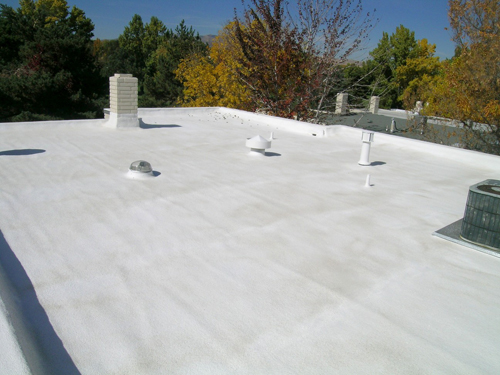Relying on the centuries-old principle that white objects absorb less heat than dark ones, homeowners like the Waldreps are in the vanguard of a movement embracing “cool roofs” as one of the most affordable weapons against climate change.
Studies show that white roofs reduce air-conditioning costs by 20 percent or more in hot, sunny weather. Lower energy consumption also means fewer of the carbon dioxide emissions that contribute to global warming.
What is more, a white roof can cost as little as 15 percent more than its dark counterpart, depending on the materials used, while slashing electricity bills.
US Energy Secretary Steven Chu, a Nobel laureate in physics, has proselytized for cool roofs at home and abroad. “Make it white,” he advised a television audience on Comedy Central’s “Daily Show” last week.
The scientist Mr. Chu calls his hero, Art Rosenfeld, a member of the California Energy Commission who has been campaigning for cool roofs since the 1980s, argues that turning all of the world’s roofs “light” over the next 20 years could save the equivalent of 24 billion metric tons in carbon dioxide emissions.

From Dubai to New Delhi to Osaka, Japan, reflective roofs have been embraced by local officials seeking to rein in energy costs. In the United States, they have been standard equipment for a decade at new Wal-Mart stores. More than 75 percent of the chain’s 4,268 outlets in the United States have them.
Some roofing specialists and architects argue that supporters fail to account for climate differences or the complexities of roof construction. In cooler climates, they say, reflective roofs can mean higher heating bills.
Scientists acknowledge that the extra heating costs may outweigh the air-conditioning savings in cities like Detroit or Minneapolis.
But for most types of construction, they say, light roofs yield significant net benefits as far north as New York or Chicago. Although those cities have cold winters, they are heat islands in the summer, with hundreds of thousands of square feet of roof surface absorbing energy.
Before the advent of central air-conditioning in the mid-20th-century, white- and cream-colored houses with reflective tin roofs were the norm in South Florida, for example. Then central air-conditioning arrived, along with dark roofs whose basic ingredients were often asphalt, tar and bitumen, or asphalt-based shingles. These materials absorb as much as 90 percent of the sun’s heat energy — often useful in New England, but less so in Texas. By contrast, a white roof can absorb as little as 10 percent or 15 percent.
Sources The New York Times and The Guardian
Thomas PRADO for www.buddhachannel.tv




